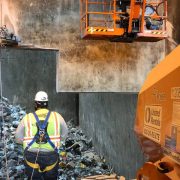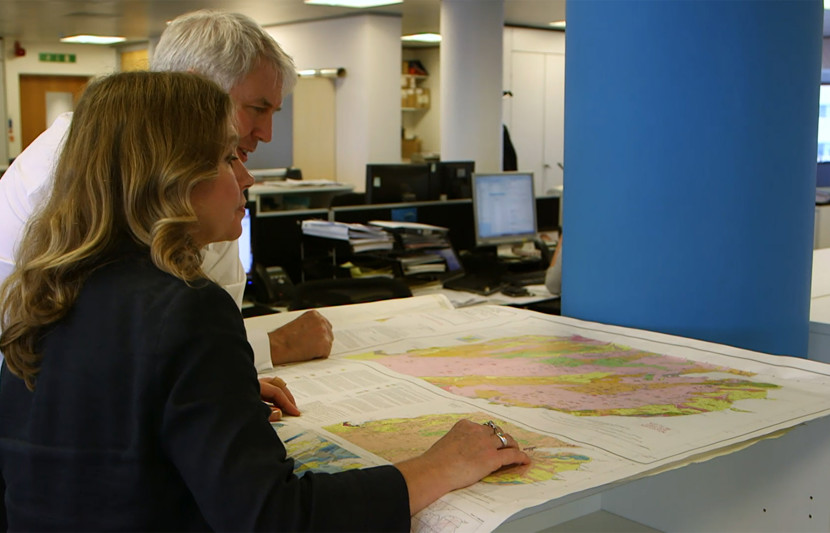The Rise of Immersive Experiences
The world of immersive experiences is rapidly evolving, combining technology, creativity, and design to create innovative spaces where people can interact with digital and physical worlds in new ways. This industry encompasses fields like virtual reality (VR), augmented reality (AR), and spatial computing, which have paved the way for exciting career opportunities.
What is Immersive Experience Creation?
Immersive experience creation refers to the development of environments where the boundaries between digital and physical realities are blurred, offering users interactive, engaging, and sensory-rich environments.
- A New Era of Interaction: These experiences allow users to participate actively rather than simply observe, making them feel part of the environment.
- Cross-Industry Applications: From entertainment and education to healthcare and retail, immersive experiences have vast applications across various industries.
Why Is This Field Growing?
The immersive experience industry is booming thanks to technological advancements and growing consumer demand for interactive, personalized experiences.
- Technological Advancements: Innovations in VR, AR, and AI have made it easier to build immersive worlds.
- Changing Consumer Expectations: Users are seeking deeper, more engaging experiences that go beyond traditional media consumption.
Key Roles in Immersive Experience Creation
The Visionaries: Experience Designers
Experience designers are the architects of immersive worlds. They design the structure, interaction, and narrative that guide users through virtual or physical environments.
- Responsibilities:
- Designing the user journey, including the flow of interaction and story.
- Creating compelling narratives that align with the immersive environment.
- Key Skills:
- Creativity, problem-solving, and storytelling ability.
- Expertise in design tools such as Unity, Unreal Engine, and Adobe XD.
The Technologists: Developers and Programmers
Behind every immersive experience is the coding and development that make it possible. Developers turn concepts into reality with programming skills and technical expertise.
- Specializations:
- VR/AR Development: Writing code for immersive experiences that integrate with virtual or augmented realities.
- Game Development: Developing interactive games and simulations within immersive environments.
- 3D Modeling and Animation: Creating digital assets, environments, and animations for immersive experiences.
- Languages & Tools:
- Unity, C++, JavaScript, and Python.
- Software for 3D modeling such as Blender and Maya.
The Artists: Visual and Audio Designers
Artists create the visual and auditory elements that make immersive experiences feel real. They craft 3D environments, animations, and soundscapes that envelop users in the experience.
- Visual Design:
- Building digital assets such as landscapes, buildings, and characters.
- Creating dynamic lighting, textures, and environments.
- Sound Design:
- Designing spatial audio that enhances user immersion.
- Creating sound effects and music that align with the virtual world.
- Software:
- Autodesk Maya, Adobe After Effects, Blender for 3D modeling.
- FMOD, Reaper for spatial sound design.
The Innovators: UX/UI Designers for Immersive Experiences
UX/UI designers in the immersive experience space focus on the usability of virtual or augmented worlds. They ensure the interface is intuitive and the user experience is seamless.
- Designing the Experience:
- Mapping user interactions within the environment and optimizing for ease of navigation.
- Creating virtual menus, buttons, and other interactive elements.
- User-Centered Design:
- Focusing on accessibility and usability for diverse users.
- Designing responsive and adaptive elements for different devices.

Immersive Experiences Across Industries
Entertainment and Media
Immersive experiences have transformed entertainment, enabling users to engage in interactive experiences that were once limited to traditional media.
- Immersive Theater and Theme Parks:
- Creating environments where audiences can interact with performers or storylines.
- Integration of VR and AR with live theater or theme park attractions.
- Immersive Films and Interactive Media:
- Developing VR films where the audience becomes part of the narrative.
- Interactive media where viewers influence the plot in real-time.
Education and Training
In education, immersive technology is changing the way students learn by offering hands-on, experiential learning opportunities.
- Virtual Classrooms:
- Creating interactive virtual learning environments that replicate real-life scenarios.
- Offering immersive field trips or lab simulations.
- Skill Training:
- Using VR and AR to train professionals in various fields such as healthcare, mechanics, and engineering.
Retail and E-Commerce
Immersive experiences in retail offer new ways to shop, try products, and make purchasing decisions.
- Virtual Try-Ons:
- Allowing customers to try on clothes, makeup, or accessories through AR.
- Providing virtual home tours and furniture placement for better decision-making.
- Interactive Retail Spaces:
- Immersive, personalized shopping experiences using projection mapping and holograms.
Healthcare and Therapy
Healthcare providers are increasingly using immersive technology for both training and treatment.
- Therapeutic Applications:
- Using VR for mental health therapy, such as exposure therapy for PTSD and phobias.
- VR-guided physical rehabilitation and physiotherapy exercises.
- Medical Training:
- Virtual surgeries and anatomy lessons for students and professionals.
Emerging Technologies Shaping Immersive Experiences
Virtual Reality (VR) and Augmented Reality (AR)
VR and AR are at the forefront of immersive experience creation, allowing users to interact with digital elements in real and virtual worlds.
- Virtual Reality (VR):
- Fully immersive environments that transport users to virtual spaces.
- VR headsets such as Oculus, HTC Vive, and PlayStation VR offer fully interactive experiences.
- Augmented Reality (AR):
- Overlaying digital elements onto the real world, often via smartphones or AR glasses.
- Common applications include navigation, gaming, and education.
Artificial Intelligence (AI) and Machine Learning
AI is revolutionizing immersive experiences by making them more responsive, adaptive, and personalized.
- Personalization:
- AI algorithms that adjust content based on user behavior, preferences, and actions.
- Creating adaptive narratives that respond to user choices in real-time.
- Interactive Storytelling:
- AI-driven storytelling that generates new, dynamic content based on the user’s actions.
Spatial Computing and Haptics
Spatial computing and haptic technology are enhancing user interactions by making virtual spaces feel more real.
- Spatial Computing:
- Enabling interaction with the environment based on 3D data and user position.
- Applications in gaming, navigation, and design.
- Haptic Feedback:
- Providing physical sensations (touch, vibration) to enhance immersion.
- Widely used in VR, gaming controllers, and medical simulations.
Career Pathways and Opportunities in Immersive Experience Creation
Building the Right Skill Set
To excel in the immersive experience field, a unique blend of technical, creative, and problem-solving skills is required.
- Educational Background:
- Degrees in game design, computer science, multimedia arts, and interaction design.
- Online courses and workshops in VR/AR development, 3D modeling, and immersive design.
- Essential Skills:
- Coding languages (C++, Python), graphic design software, 3D modeling skills, and storytelling abilities.
Exploring Job Roles
The immersive experience industry offers a variety of roles, from development to design, ensuring diverse career opportunities.
- Entry-Level Roles:
- Junior Experience Designer, 3D Modeler, Junior Developer.
- Advanced Roles:
- Lead Designer, Senior Developer, Technical Director, VR/AR Project Manager.
Freelancing and Startups
Freelancing and entrepreneurship provide flexibility and creative freedom for those looking to create their own immersive experiences.
- Freelancing Opportunities:
- Independent projects in VR/AR content creation or interactive design.
- Starting Your Own Studio:
- Building a team of creatives and technologists to develop custom immersive experiences.
Conclusion: The Future of Immersive Experience Careers
The immersive experience industry is rapidly evolving, with new technologies pushing the boundaries of what’s possible. As VR, AR, and AI continue to evolve, career prospects in this field are set to grow. With opportunities across industries like entertainment, healthcare, retail, and education, the future of immersive experience creation is bright, dynamic, and full of potential.










Comments